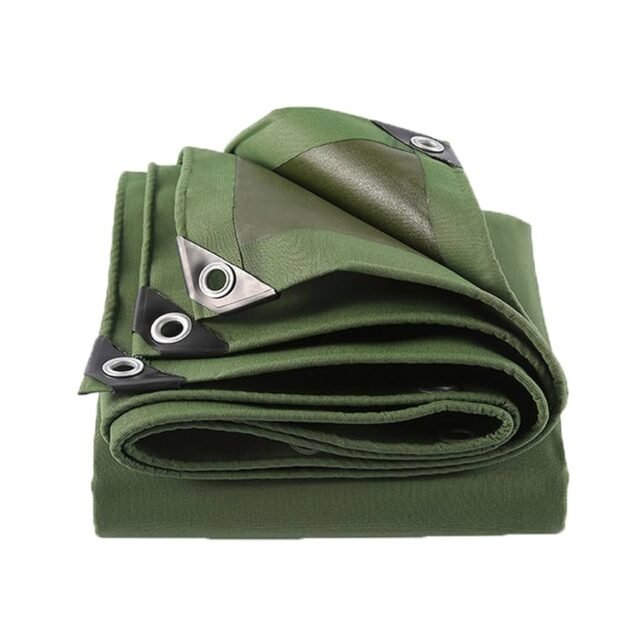From being a shelter to a banner that can save you when heat, dust, and water are blowing, tarps are the ideal utility you can have when a storm or any drastic natural disaster happens. The article will describe the correct ways to use a Tarpaulin so as to save your property and the things that were from the harsh weather.
Selecting the Right Tarpaulin
To begin with, one must select an appropriate type of tarpaulin to protect from a severe storm. Tarps are built using different types of materials in different sizes and thicknesses. Waterproof, heavy-duty tarpaulins like polyethylene or canvas are the best choice for these tasks. The tarp you choose will need to be big enough to cover the area you want to protect, with some extra material for secure fastening.
Preparing for Tarp Installation
It is necessary to the preparation of the ground where you want to install the tarp before of the tarp. The process starts by clearing the area over which the tarp will be laid of any debris or objects that could penetrate or damage it. Along with the clearing of the space, you should also assemble the necessary tools and materials like ropes, bungee cords, stakes, and a hammer.
Covering Roofs and Structures
Covering a roof is the most typical use for tarpaulins during the rainy season. A roof can be covered using the following steps:
- Roll the tarpaulin over the part you want to be protected and make sure it is fixed properly.
- Make sure the tarp is larger than the roof so that a part of it extends beyond the edges.
- Attach the tarp on all four pieces and along the edges by using nails or screws with washers.
- Make a small slope so that the water will be able to run off.
To secure the tarp properly, one can use ropes or bungee cords to tie down the tarp, attaching them to strong structures or stakes in the ground.
Protecting Outdoor Equipment and Furniture
Further, tarpaulins protect your outdoor furniture and equipment from getting damaged during the storm. The Canvas Tarpaulin will work effectively if the following steps are correctly followed:
- Keep the items to be protected in a separate area that is protected from the storm (if possible).
- Full coverage of all the items with a tarpaulin is ideal.
- Staple the tarp to the ground and use stakes or heavy objects in order to hold down the edges of the tarp to the wind.
- Do not leave any edges loose, so the wind will not catch anything.
Creating Temporary Shelters
Sometimes, in desperate situations, tarps are a lifesaver because we can use them as an emergency shelter. Start by building a makeshift shelter:
- See whether you can locate at least two valid trees or posts about 10 feet apart on the ground.
- Stretch a rope between the two trees, at roughly 7 feet above the ground.
- Hang the tarpaulin over the rope so the length is equal on both sides.
- Fix your tarp onto the ground by the edges and the corners using stakes or other heavy objects.
Maintaining Tarpaulins During the Storm
After setting the tarp, it is mandatory to check from time to time whether the tarp is still in a good state during the storm. Regularly inspect the tarp for any loose edges or spots where water is pooling. If you are safe, make the necessary adjustments to ensure the safety of the protection.
Post-Storm Care
Once the storm has finished, the owner has to check the tarpaulin for possible damage. It will be good to brush off any debris and to let the tarp completely dry before putting it away. Using the tarp in the right way and proper care after tse will give it a long life, and it is also always ready for future use.
Conclusion
Along with this, the tarp is a versatile and potentially effective instrument for the protection against the storm if it is honestly used, the statement concludes. The available tarpaulin is the best! To blow it the correct way and get enough strength, you need a good quality tarp to cover your roof. They are one of the most effective instruments for that. The correct and most effective method of waterproofing using a tarp involves the use of the dry chirping method. The method of dry chirping is the most important technique used to achieve water tightness. They have an inherent rapture property when they trap air in them, which causes them to blow away if not properly secured.
Also Read: https://smartskill97.com/








[…] Products from prominent franchises will probably keep drawing on the cannabis universe, and artists on websites such as Etsy, Instagram, and TikTok will continue to drive the excitement with limited editions and bespoke commissions. Also Read […]